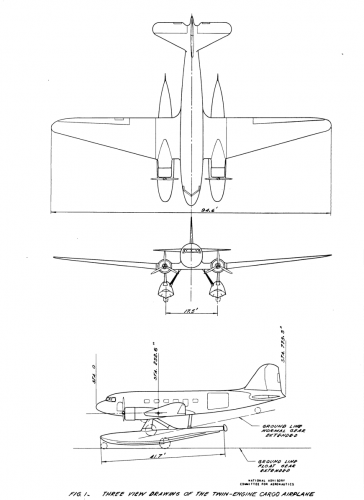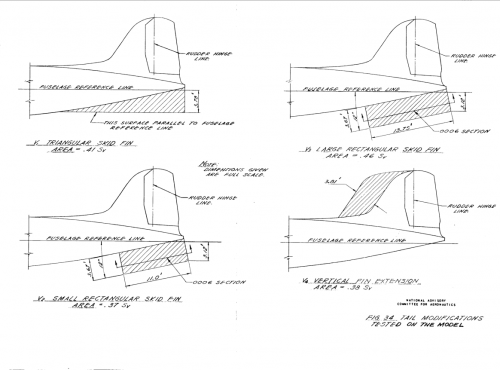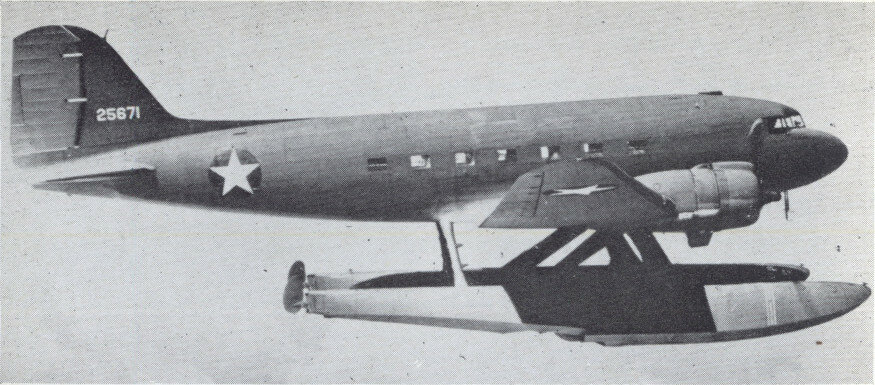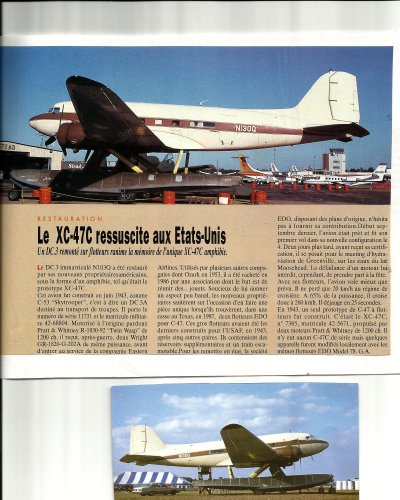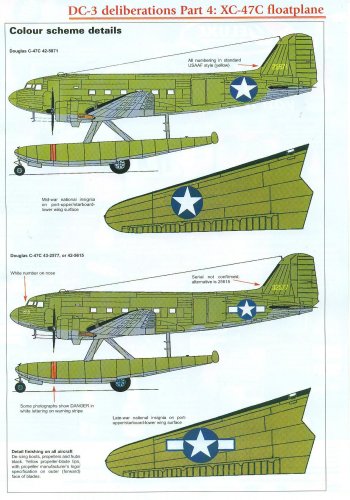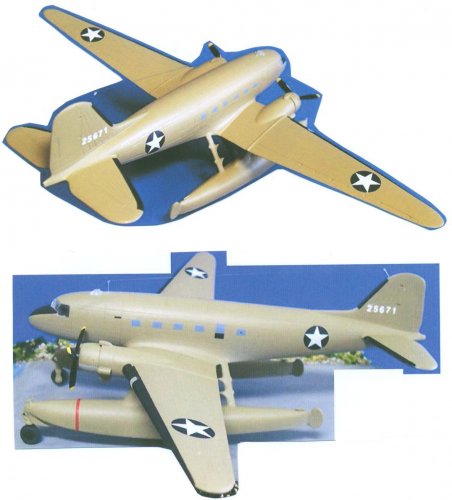At one point, the C-47 grew a pair of water wings. Initially, planners thought the Navy and Marine island hopping campaign in the Pacific would require an amphibian float plane since they knew many of the islands were without airfields.
The Edo Corporation, of College Point, N.Y. designed, and built twin, 1-ton floats, (the largest floats ever built). Each float was 42 feet long, five feet, eight inches wide, and displaced 29,000 pounds of water. The cellular construction of each float had 14 separate water-tight compartments. Each float also had a 325 gallon fuel tank. The floats had fully retractable, hydraulic wheels, and could land on water, snow or land. The float rudders were connected to the air rudder.
They could be disconnected in flight.The C-47C weighed 34,162 pounds and had several serious deficiencies. Pilots found the C-47C difficult to launch in rough water, and performed like a pogo stick when landing on anything but a mirror smooth body of water. It had a high tire failure on land, and was difficult to handle in a crosswind landing. The C-47C was slow on take-off and JATO bottles did little to improve its performance. It was also about 30 mph slower than its sisters without floats.

